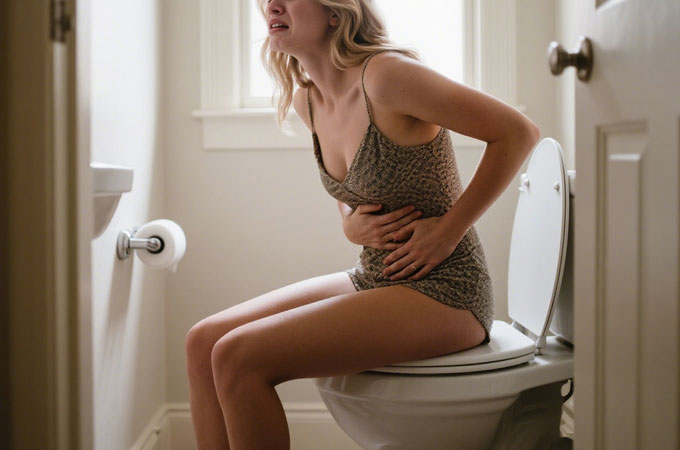Let’s talk about something most people shy away from: hemorrhoids. It’s not exactly dinner-table conversation, but here’s the reality—hemorrhoids are incredibly common, affecting millions worldwide, and they can turn everyday moments into a painful ordeal. Claims on platforms like X suggest that “nine out of ten people” deal with this condition, and while that number might be an exaggeration, the discomfort is all too real for those who suffer. The good news? You don’t always need surgery to find relief. From creams like Sediproct to simple lifestyle tweaks, let’s unpack what hemorrhoids are, why they’re so prevalent, and how you can ease the pain—without going under the knife.
Hemorrhoids, often called piles, are swollen veins in or around the anus and lower rectum, similar to varicose veins in your legs. They come in two types: internal, which form inside the rectum and often go unnoticed unless they prolapse, and external, which appear under the skin around the anus and can hurt like heck. Symptoms range from itching and discomfort to bleeding during bowel movements or even a painful lump if a clot forms (thrombosis). According to a 2020 international survey, about 11% of adults globally report having hemorrhoids, though studies like one from Austria in 2014 put the prevalence as high as 39% when screened via colonoscopy. Many cases are mild, with 55% of those affected showing no symptoms at all. But for those who do feel the burn, it’s a problem that can make sitting, walking, or even sneezing a misery.
Why are hemorrhoids so common? It’s all about pressure. Straining during bowel movements—often due to constipation—is a major culprit. Other triggers include sitting on the toilet too long (yes, scrolling on your phone counts), pregnancy, obesity, and a low-fiber diet. A 2021 study from Ethiopia found that constipation quadruples the odds of developing hemorrhoids, while being overweight doubles the risk. Pregnancy is another big factor, especially for women, as the growing uterus presses on pelvic veins, and 39% of pregnant women in one Saudi Arabian study reported hemorrhoids. Age plays a role, too, with peak prevalence between 45 and 65, though younger adults aren’t immune, especially if lifestyle factors like poor diet or sedentary habits pile on.
The claim that “nine out of ten” people have hemorrhoids seems to overstate things—credible studies suggest a range of 4.4% in the U.S. to 16.6% in Korea—but the condition’s impact is undeniable. It’s the fourth leading outpatient gastrointestinal diagnosis in the U.S., racking up 3.3 million doctor visits annually. The embarrassment factor is real, too. Many people avoid seeking help, which can delay relief and, in rare cases, mask serious conditions like colorectal cancer. That’s why experts stress seeing a doctor if you notice persistent symptoms, especially rectal bleeding.
Now, about that relief. Social media buzz, like posts on X, touts products like Sediproct, a cream combining hydrocortisone (to reduce swelling) and cinchocaine (a numbing agent) for mild to moderate hemorrhoids and anal fissures. The claim that it “solves pain in 30 days” lacks solid clinical backing—most studies on such creams show relief within days to a week, but long-term results vary. For mild cases, 2–4 applications might help; for moderate ones, more consistent use is needed, but severe cases often require more than just a cream. Anecdotal feedback, like the “amazing” results shared by a friend in the source post, is encouraging but not a substitute for evidence. Over-the-counter options like Preparation H, which also uses hydrocortisone or phenylephrine, can reduce itching and swelling, but doctors warn against using them for more than two weeks to avoid skin thinning.
Beyond creams, non-surgical treatments are surprisingly effective. Dietary changes are a cornerstone: aim for 20–35 grams of fiber daily from fruits, vegetables, and whole grains to soften stools and ease straining. A 2006 meta-analysis found that fiber supplements cut hemorrhoid symptoms by half. Drinking 2–3 liters of water daily and avoiding spicy foods or alcohol also help. Sitz baths—soaking your bottom in warm water for 15–20 minutes a few times a day—can work wonders for soothing irritation. For more stubborn cases, office-based procedures like rubber band ligation (where a band cuts off blood flow to the hemorrhoid, causing it to shrink) boast an 87% success rate for grades I–III, with minimal pain. Sclerotherapy, injecting a chemical to shrink the hemorrhoid, is another option, especially for those with bleeding issues, though its long-term success hovers around 70%.
Lifestyle tweaks can prevent flare-ups. Limit toilet time to five minutes—leave the phone outside! Regular exercise, like a 30-minute walk, keeps your digestive system humming and reduces pressure on pelvic veins. Maintaining a healthy weight is key, as excess body fat increases risk by 3.5% per BMI point. For pregnant women, pelvic floor exercises can strengthen supporting tissues. These steps aren’t just about relief—they’re about taking back control of a condition that can feel isolating and embarrassing.
Hemorrhoids may be a pain in the you-know-what, but they’re not a life sentence. Most cases resolve with conservative measures, and only about 5% of patients need surgery. By catching symptoms early and making smart changes, you can keep this common condition from running your life. So, don’t suffer in silence—talk to a doctor, grab some fiber, and maybe give that cream a try. Your backside will thank you.
This article draws on insights from a 2020 international survey, the American Academy of Family Physicians, and posts on X, with gratitude to researchers like Ghislaine Salmat and clinicians sharing practical advice.

